Take a summer walk with me...
And learn a bit more about the plants in the fields
Put away the snows of winter and walk with me through the fields and woods of the summer sun …
Known colloquially as the ditch lily, this ubiquitous perennial is not a true lily at all but from the genus Hemerocallis. This word derives from the Greek combination of ‘hemera’, meaning day and ‘kallos’, meaning beautiful. And indeed, the flowers of Hemerocallis fulva (with other common names like tawny daylily and outhouse lily) only persist for one day and are at once juicy in colour and velvety in texture.
With flowers whose veined petals reach open to greet the sun, this plant can be intoxicating when you come upon it in the wild. Who has not been tempted to dig up one or two from the road-side and transplant them in the garden? And who has not found that within a couple of years you have these dayliles marching throughout your beds?! That is because Hemerocallis have a tuberous root system that multiplies ten-fold when you turn your back!
This daylily is not native to North America even though it is found everywhere, but originates in Asia, making its way through the Himalayas, China, Korea and Japan. It was brought west by plant hunters and has been grown in Europe since at least the 16th century. Although it is considered by some to be a good garden plant because of its sturdy nature and reliable blooming, breeders have worked diligently for centuries to produce new varieties that have more desirable traits, like more attractive foliage, repeat blooming and a variety of flower colours.
So, rather than include this unwieldy plant in the garden, leave them where they can mingle with other wildflowers and be the stars of July and August.
Queen Anne’s lace or Ammi majus belongs to the carrot family and can be found in open fields and on the edges of woods almost everywhere in North America although its native range is Central Europe, Western Asia and North Africa. It shares its family, Apiaceae, not only with edibles like carrot, celery, parsley and parsnip, but also with several toxic genera like poison hemlock, giant hogweed and wild parsnip. But chances are you won’t have a bad phototoxic reaction when handling Queen Anne’s lace because, well, I haven’t yet and I can just look at the other plants in this family and get a horrible rash and blistering.
Never mind that. This annual wildflower is beautiful, both in flower and once its seeds develop so you might be convinced that it would look beautiful in your garden. But think twice because if you allow it to go to seed, it will likely spread wantonly. But if that’s ok with you, then by all means seek it out.
The happy-go-lucky black eyed Susan (Rudbeckia hirta var. pulcherrima) is found in sunny, sandy and open fields all across Ontario. Its native range extends from Saskatchewan to Nova Scotia but it can be found in just about every other province. It is a sign of mid-summer — to me, a sign that the slippery slope to autumn has begun. In horticulture school I remember that the golden flowers that heralded autumn were generically grouped with the acronym, BYDs by one of my professors — that is, Big Yellow Daisies — and surely this small yellow daisy is the start of that parade.
The central cone of these beauties always reminds me of embroidery, with the tiny golden stamens encircling it. Of course Rudbeckia is now a darling in perennial plantings with many species and cultivars, all native to North America. The name ‘Rudbeckia’ was given to this plant by Carl Linnaeus, the father of plant taxonomy (that is, the Latin organization and naming of plants), in the mid 1700s. He named it after his patron and fellow botanist, Olf Rudbeck the Younger, whom he met at Uppsala University where Sweden’s first botanic garden was established, called the Linnaean Garden. Here is his fawning praise and justification for naming this plant after his patron and mentor, as quoted by William Blunt in his biography of Linnaeus entitled The Compleat Naturalist:
“So long as the earth shall survive and as each spring shall see it covered with flowers, the Rudbeckia will preserve your glorious name. I have chosen a noble plant in order to recall your merits and the services you have rendered, a tall one to give an idea of your stature, and I wanted it to be one which branched and which flowered and fruited freely, to show that you cultivated not only the sciences but also the humanities. Its rayed flowers will bear witness that you shone among savants like the sun among the stars; its perennial roots will remind us that each year sees you live again through new works. Pride of our gardens, the Rudbeckia will be cultivated throughout Europe and in distant lands where your revered name must long have been known. Accept this plant, not for what it is but for what it will become when it bears your name.”
Mullein (Verbascum thapsus) can be found punctuating the landscape through every season: either as a beautiful felted rosette in its first year, or as a tall paddle-leafed yellow spire in its second. Finally, it becomes a dark sentinel in the winter of its senescence. Introduced from Europe, Northern Africa and Asia, it is now firmly ensconced in the wilds of the Americas as well as Australia. Its seeds can persist in the soil, dormant, for many years until disturbed — when they receive light they will respond by germinating. In fact, seeds from Verbascum thapsus have been found in the Cromer Forest Bed in the UK, which have left deposits dating back two million years!
This species of mullein is host to 29 families of insects, both considered beneficial and “pests”, making it an important plant for maintaining an ecological balance in the landscape. It has also been traditionally used by indigenous people for skin and lung ailments; indeed, two thousand years ago, Dioscorides, the Greek physician, pharmacologist and botanist, recommended mullein for the treatment of pulmonary afflictions in his five volume herbal medicine encyclopedia, De Materia Medica.
Of course this species of mullein is rarely grown in the garden, but others are, namely Verbascum chaixii or nettle-leafed mullein. This species is much shorter, with less striking leaves and more decorative yellow flowers sporting contrasting eyes. Like V. thapsus, the flowers open from the bottom up, allowing the spires to hang their heads until the blossoms are fully unfurled.
Of course milkweed (Asclepias syriaca) is also an important host plant in the wild as the monarch butterfly and its larvae rely on it for nourishment. I probably love seeing the transformation of this plant through the seasons above all others. You might not be surprised to know that milkweeds produce some of the most complex flowers in the plant kingdom, similar to the complexity of orchids.
Asclepias was also named by Linnaeus after the Greek god of medicine. It has a long tradition of healing ailments among indigenous peoples; its “floss” or seed fluff has excellent insulating properties and was used in this capacity during World War II; its latex was tried as a source of rubber during the same period; it also contains a chemical called glycoside that was used as a poison on arrow tips by indigenous people in South America and Africa.
Did you know that there are three varieties of milkweed butterflies, all beautiful, that visit this common milkweed in North America? Of course they include the well-loved monarch (Danaus plexippus), but also the queen butterfly (Danaus gilippus) and the soldier butterfly (Danaus eresimus). Planting this milkweed in the garden will give months of pleasure, not only watching the butterflies and larvae, but also the changes it undergoes with the seasons.
Thanks for coming along on the walk…..


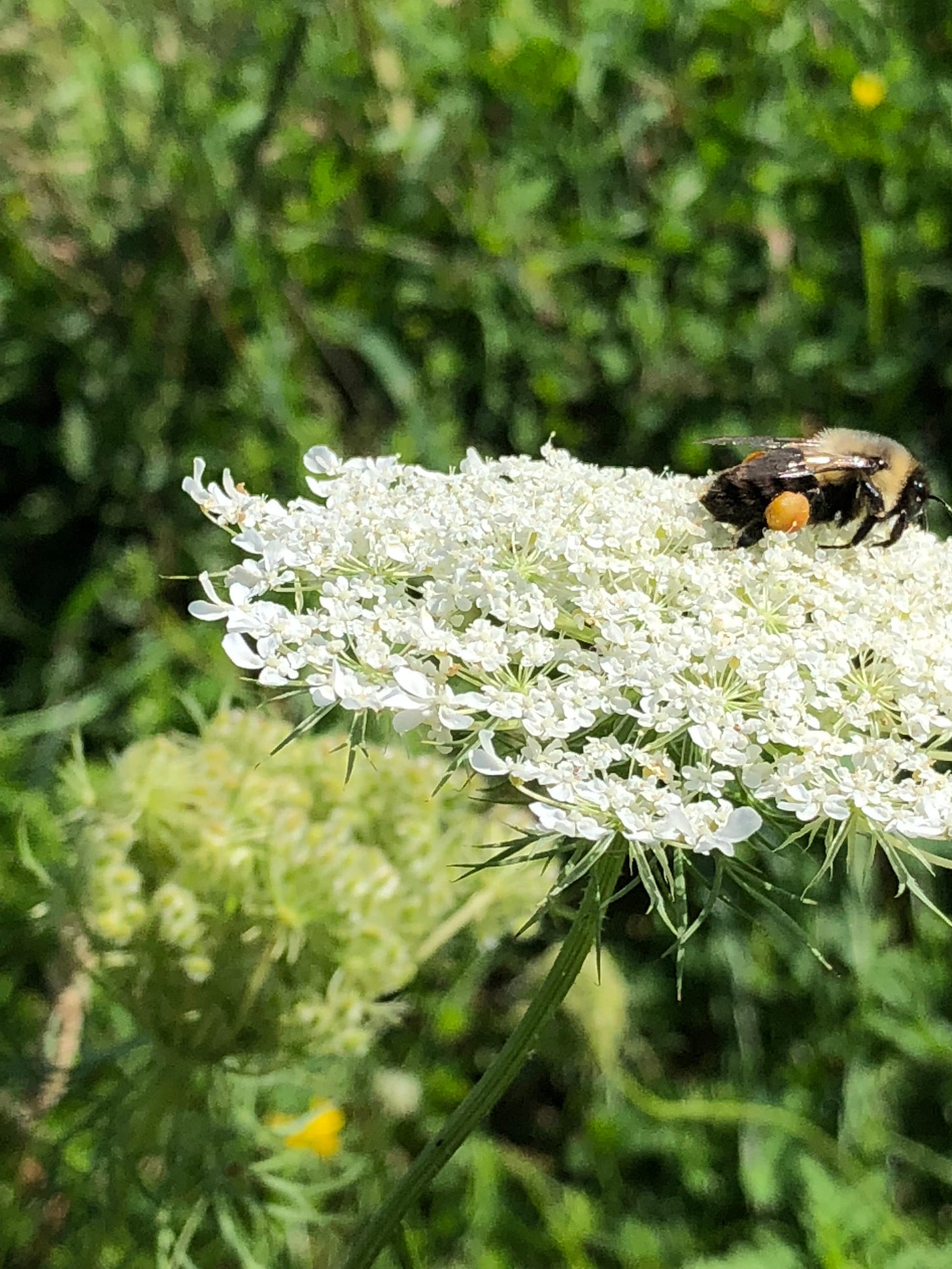
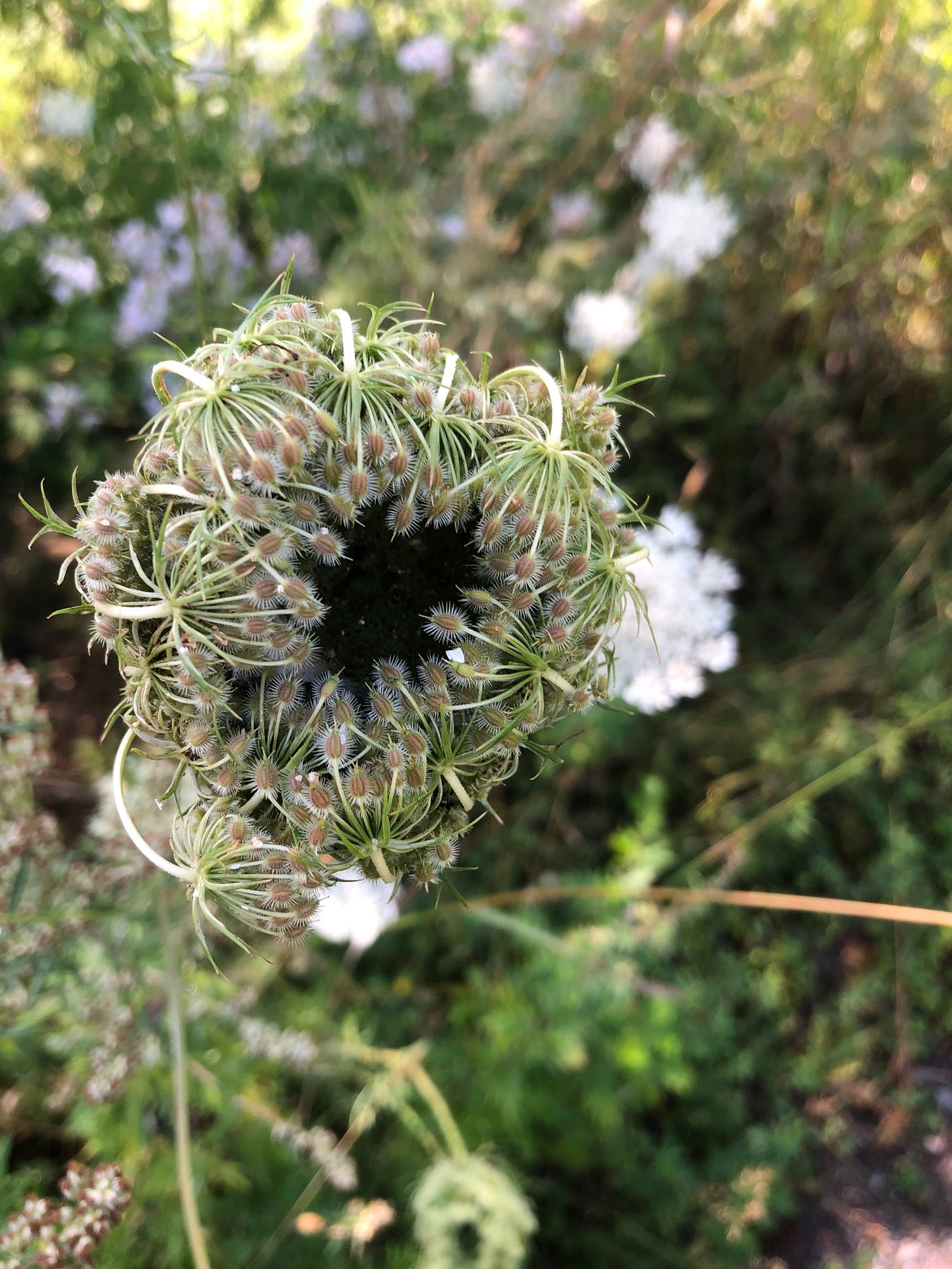


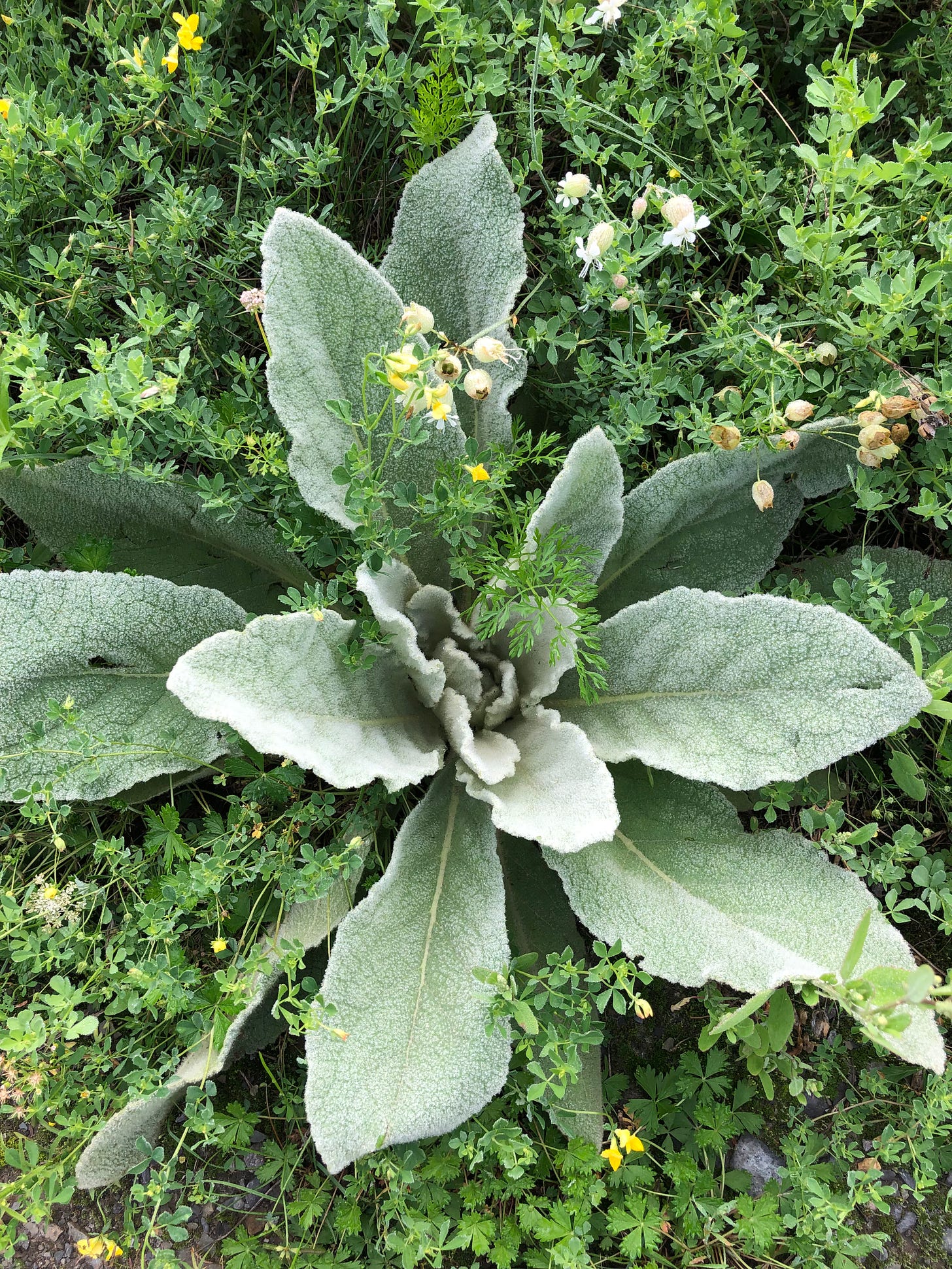
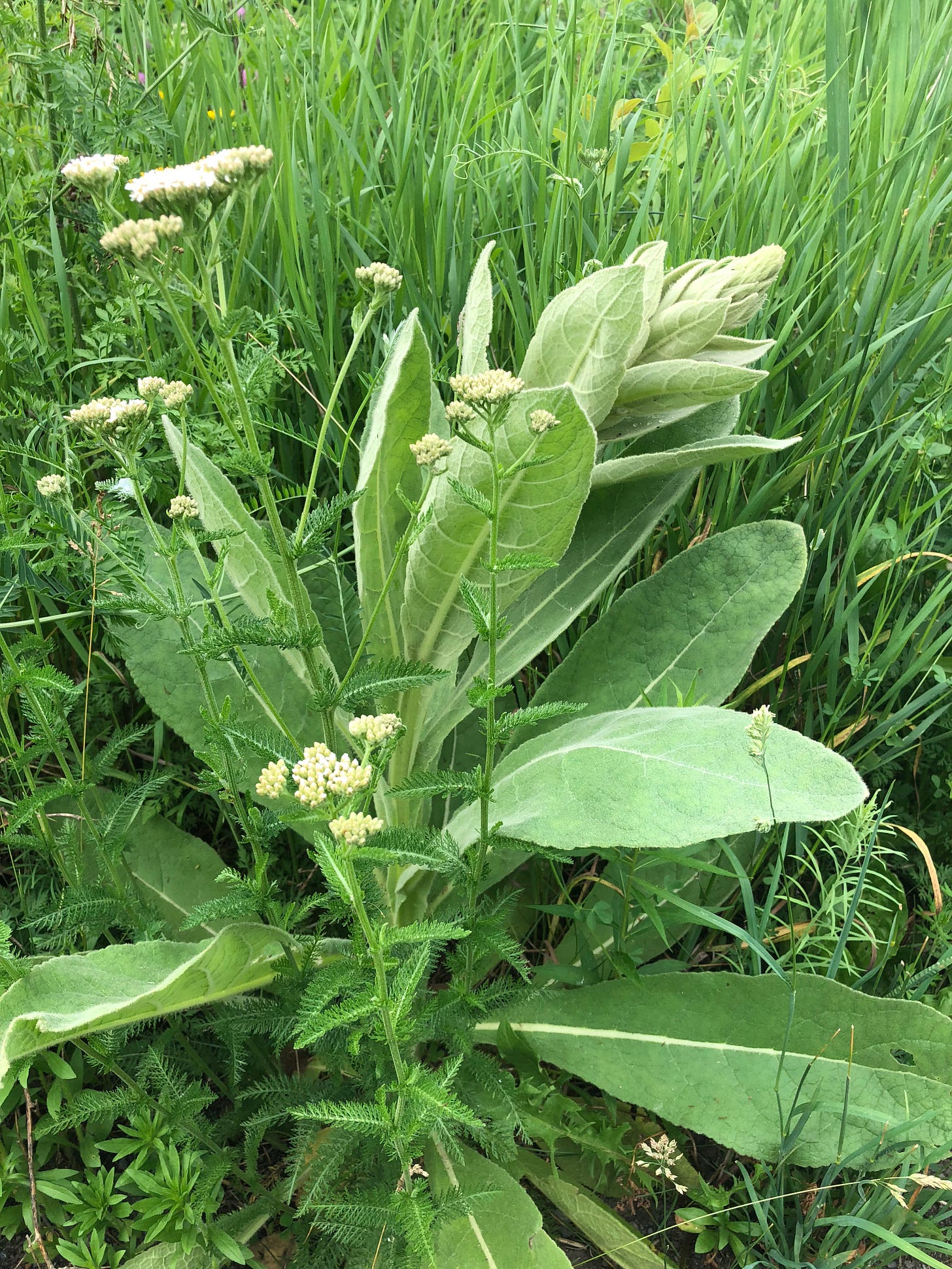
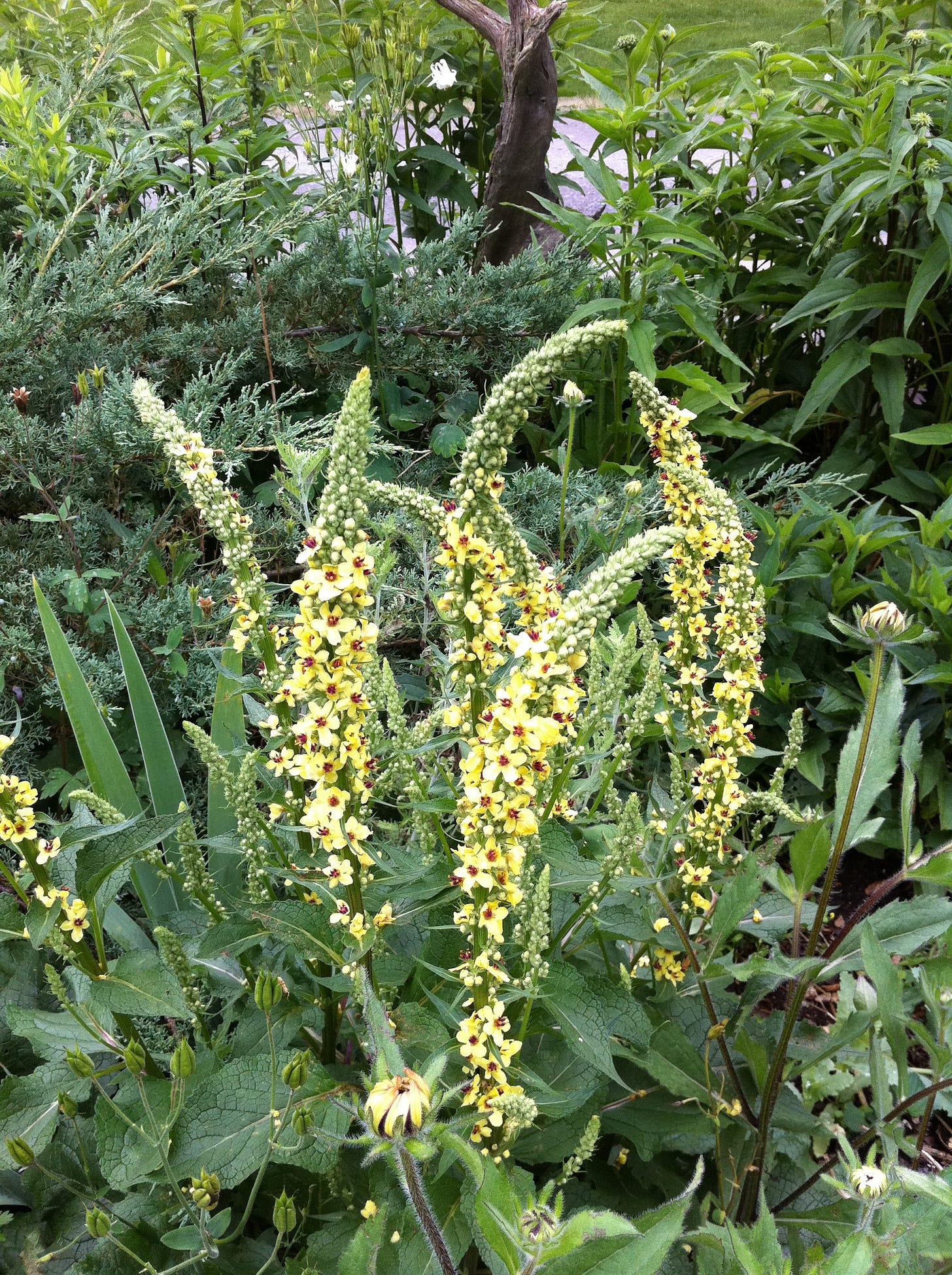

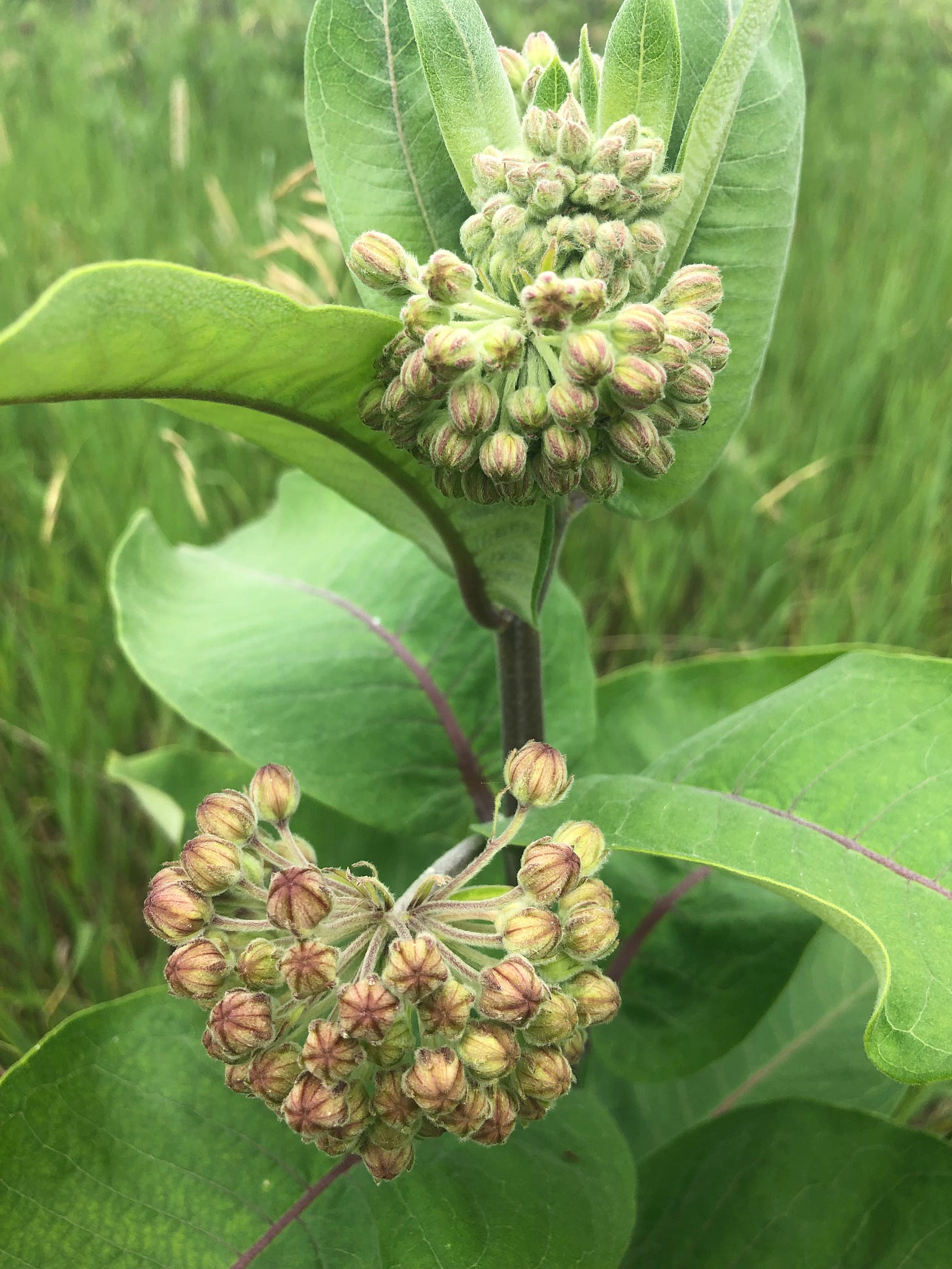

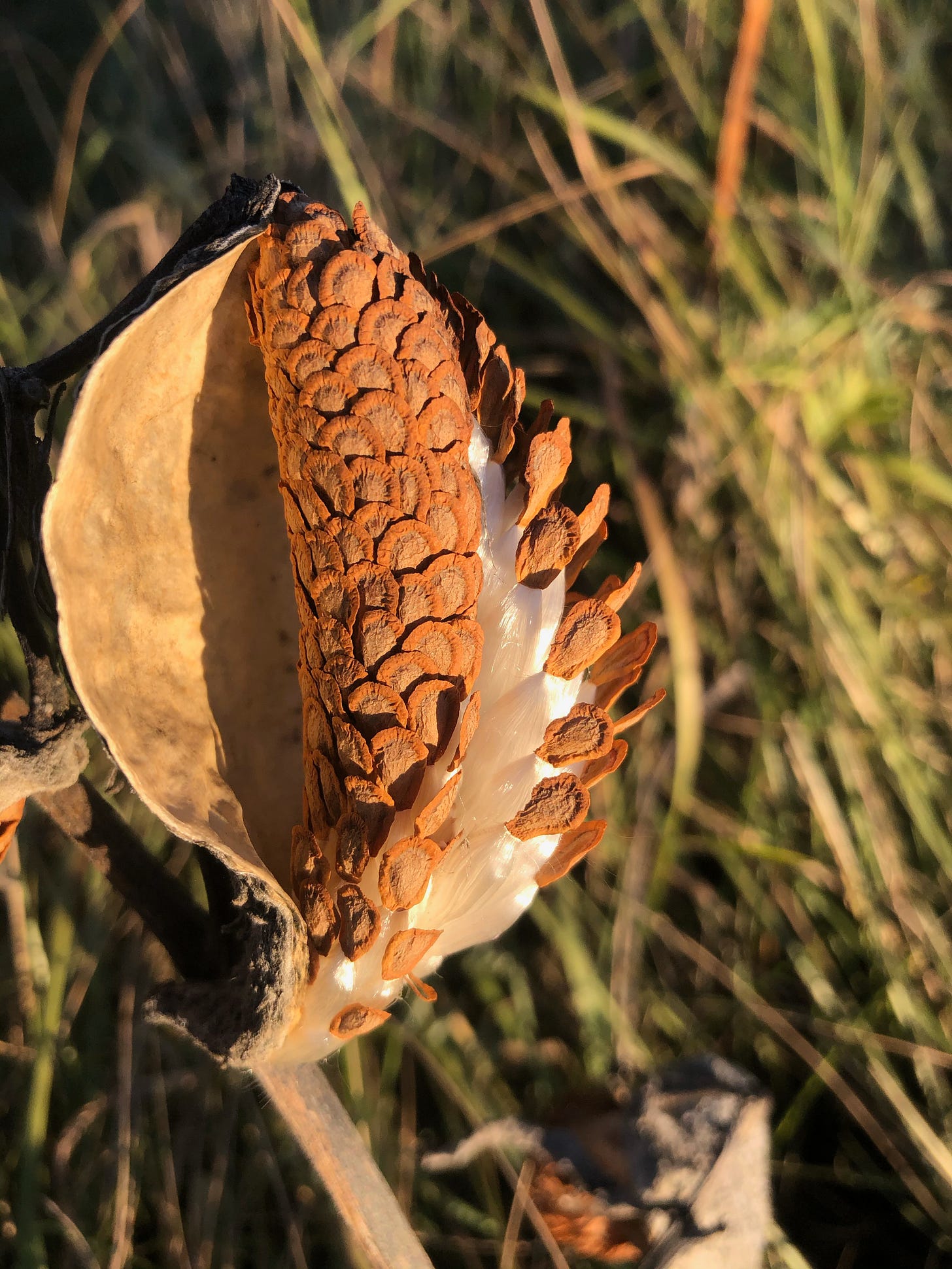

Ahhh, milkweed pods. I had forgotten how much I loved opening them, then watching the dried seedlings fly away on their gosssmer wings. Milkweed isn't native here on Salt Spring Island and I have never got around to planting it to see if it would do well. Mullein, on the other hand, loves it here, but it's not a favourite in my garden. I banish it to the field beyond my fence where it does tend to thrive.
Thanks for the reminder that summer will come and there are wonderful plants to enjoy on a walk in the wild. 💚🧡💛